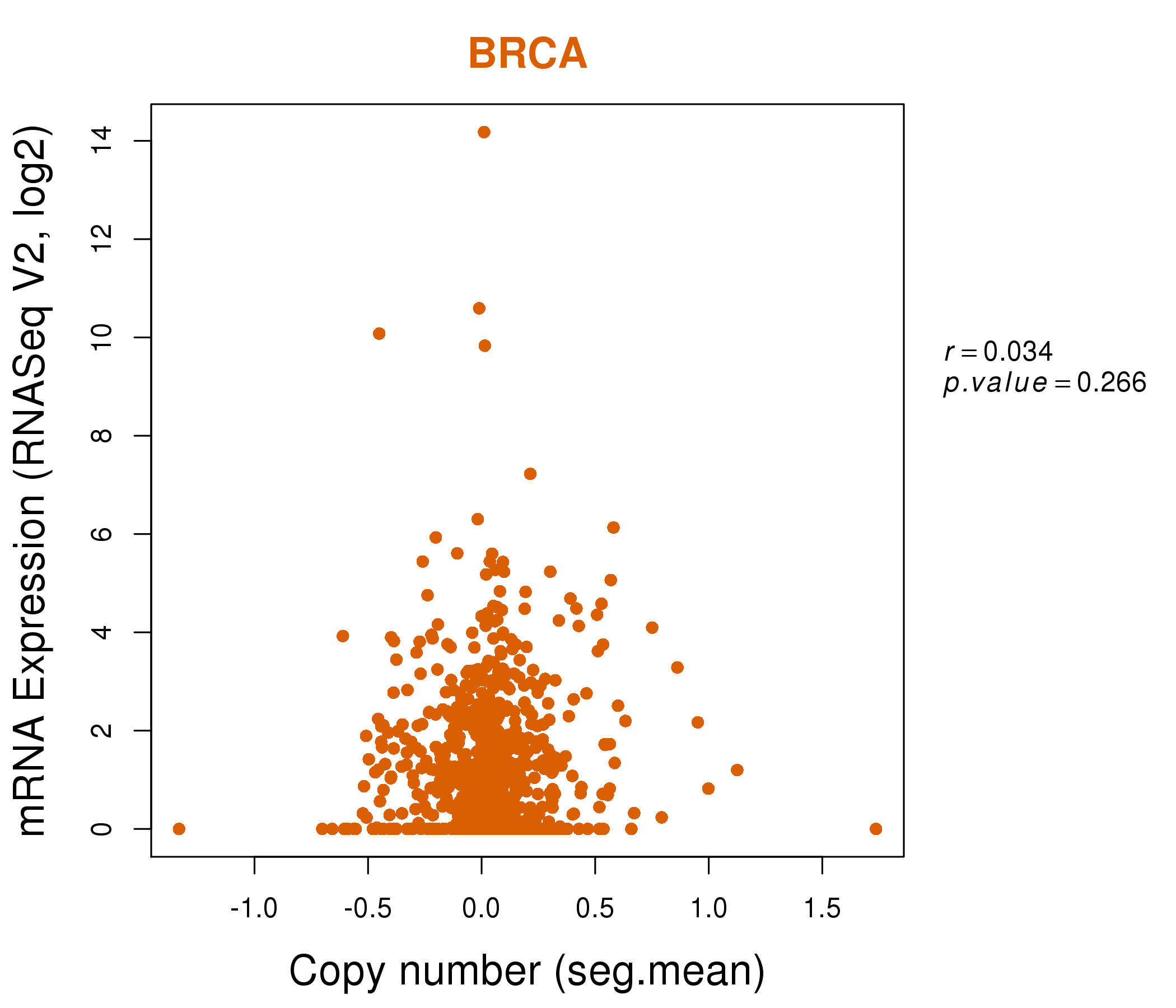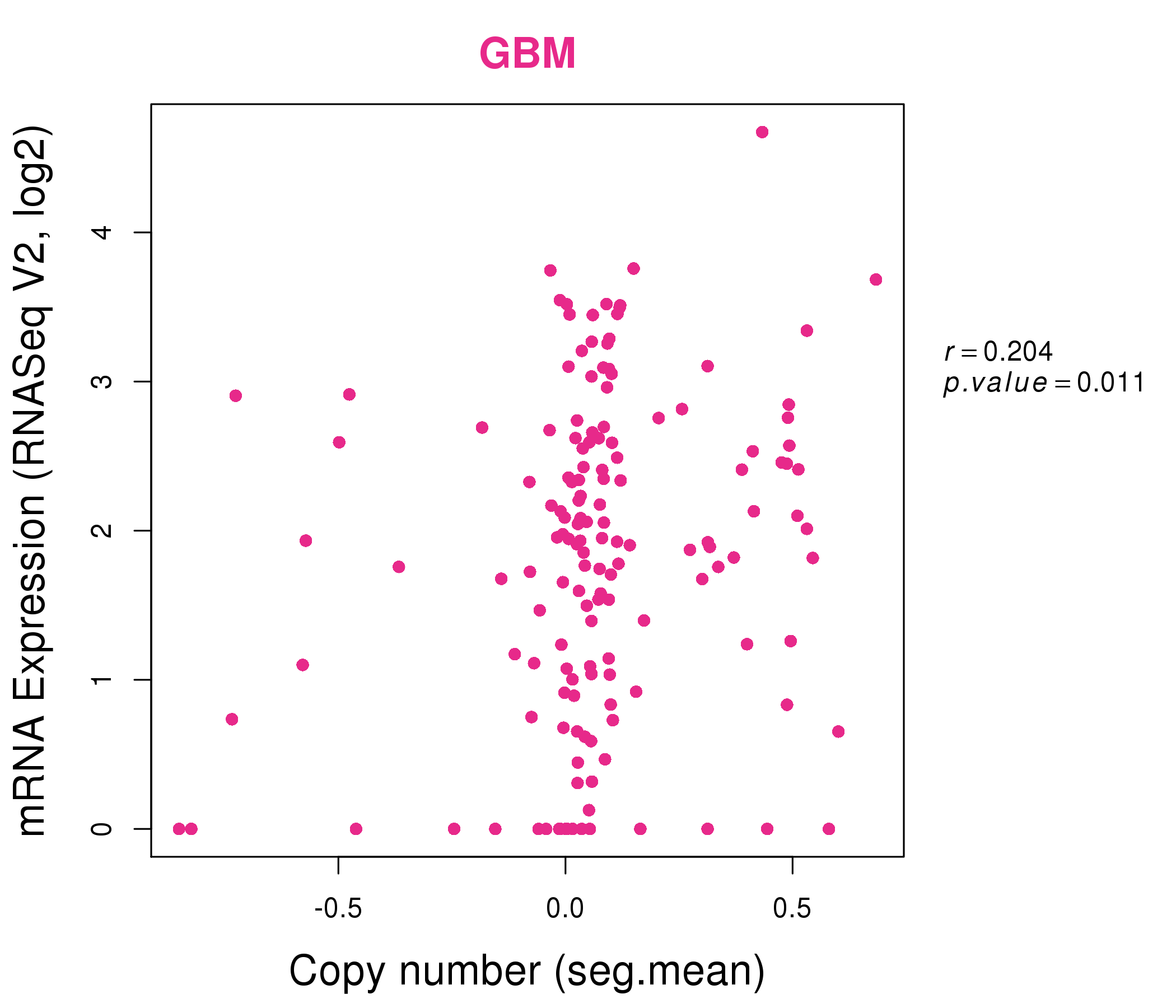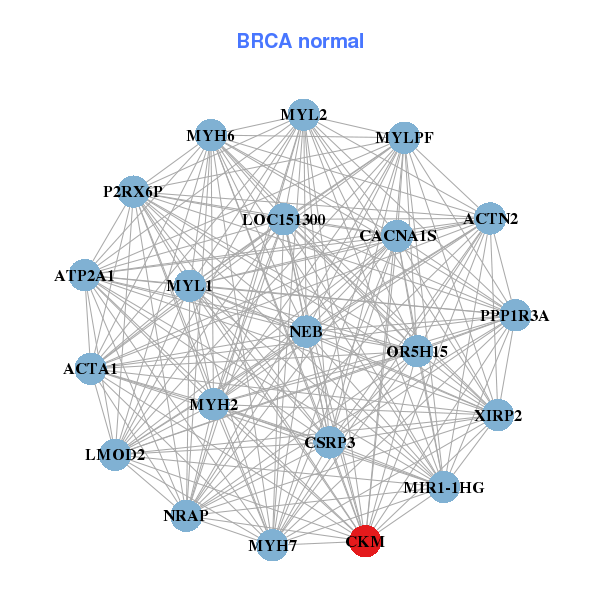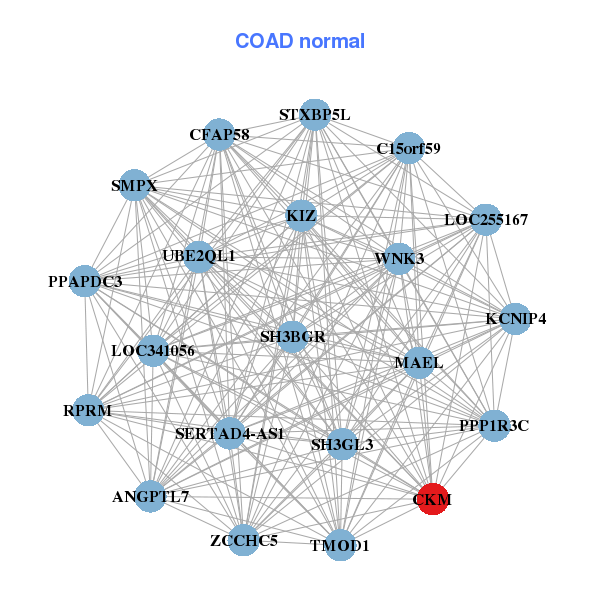|
|||||||||||||||||||||||||||||||||||||||||||||||||||||||||||||||||||||||||||||||||||||||||||||||||||||||||||||||||||||||||||||||||||||||||||||||||||||||||||||||||||||||||||||||||||||||||||||||||||||||||||||||||||||||||||||||||||||||||||||||||||||||||||||||||||||||||||||||||||||||||||||||||||||||||||||||||||||||||||||||||||||||||||||||||||||||||||||||
| |
| Phenotypic Information (metabolism pathway, cancer, disease, phenome) |
| |
| |
| Gene-Gene Network Information: Co-Expression Network, Interacting Genes & KEGG |
| |
|
| Gene Summary for CKM |
| Basic gene info. | Gene symbol | CKM |
| Gene name | creatine kinase, muscle | |
| Synonyms | CKMM|M-CK | |
| Cytomap | UCSC genome browser: 19q13.32 | |
| Genomic location | chr19 :45809670-45826233 | |
| Type of gene | protein-coding | |
| RefGenes | NM_001824.4, | |
| Ensembl id | ENSG00000104879 | |
| Description | creatine kinase M chaincreatine kinase M-type | |
| Modification date | 20141207 | |
| dbXrefs | MIM : 123310 | |
| HGNC : HGNC | ||
| Ensembl : ENSG00000104879 | ||
| HPRD : 00426 | ||
| Vega : OTTHUMG00000181782 | ||
| Protein | UniProt: go to UniProt's Cross Reference DB Table | |
| Expression | CleanEX: HS_CKM | |
| BioGPS: 1158 | ||
| Gene Expression Atlas: ENSG00000104879 | ||
| The Human Protein Atlas: ENSG00000104879 | ||
| Pathway | NCI Pathway Interaction Database: CKM | |
| KEGG: CKM | ||
| REACTOME: CKM | ||
| ConsensusPathDB | ||
| Pathway Commons: CKM | ||
| Metabolism | MetaCyc: CKM | |
| HUMANCyc: CKM | ||
| Regulation | Ensembl's Regulation: ENSG00000104879 | |
| miRBase: chr19 :45,809,670-45,826,233 | ||
| TargetScan: NM_001824 | ||
| cisRED: ENSG00000104879 | ||
| Context | iHOP: CKM | |
| cancer metabolism search in PubMed: CKM | ||
| UCL Cancer Institute: CKM | ||
| Assigned class in ccmGDB | C | |
| Top |
| Phenotypic Information for CKM(metabolism pathway, cancer, disease, phenome) |
| Cancer | CGAP: CKM |
| Familial Cancer Database: CKM | |
| * This gene is included in those cancer gene databases. |
|
|
|
|
|
|
| |||||||||||||||||||||||||||||||||||||||||||||||||||||||||||||||||||||||||||||||||||||||||||||||||||||||||||||||||||||||||||||||||||||||||||||||||||||||||||||||||||||||||||||||||||||||||||||||||||||||||||||||||||||||||||||||||||||||||||||||||||||||||||||||||||||||||||||||||||||||||||||||||||||||||||||||||||||||||||||||||||||||||||||||||||||||||
Oncogene 1 | Significant driver gene in | ||||||||||||||||||||||||||||||||||||||||||||||||||||||||||||||||||||||||||||||||||||||||||||||||||||||||||||||||||||||||||||||||||||||||||||||||||||||||||||||||||||||||||||||||||||||||||||||||||||||||||||||||||||||||||||||||||||||||||||||||||||||||||||||||||||||||||||||||||||||||||||||||||||||||||||||||||||||||||||||||||||||||||||||||||||||||||||||
| cf) number; DB name 1 Oncogene; http://nar.oxfordjournals.org/content/35/suppl_1/D721.long, 2 Tumor Suppressor gene; https://bioinfo.uth.edu/TSGene/, 3 Cancer Gene Census; http://www.nature.com/nrc/journal/v4/n3/abs/nrc1299.html, 4 CancerGenes; http://nar.oxfordjournals.org/content/35/suppl_1/D721.long, 5 Network of Cancer Gene; http://ncg.kcl.ac.uk/index.php, 1Therapeutic Vulnerabilities in Cancer; http://cbio.mskcc.org/cancergenomics/statius/ |
| KEGG_ARGININE_AND_PROLINE_METABOLISM REACTOME_METABOLISM_OF_AMINO_ACIDS_AND_DERIVATIVES | |
| OMIM | |
| Orphanet | |
| Disease | KEGG Disease: CKM |
| MedGen: CKM (Human Medical Genetics with Condition) | |
| ClinVar: CKM | |
| Phenotype | MGI: CKM (International Mouse Phenotyping Consortium) |
| PhenomicDB: CKM | |
| Mutations for CKM |
| * Under tables are showing count per each tissue to give us broad intuition about tissue specific mutation patterns.You can go to the detailed page for each mutation database's web site. |
| - Statistics for Tissue and Mutation type | Top |
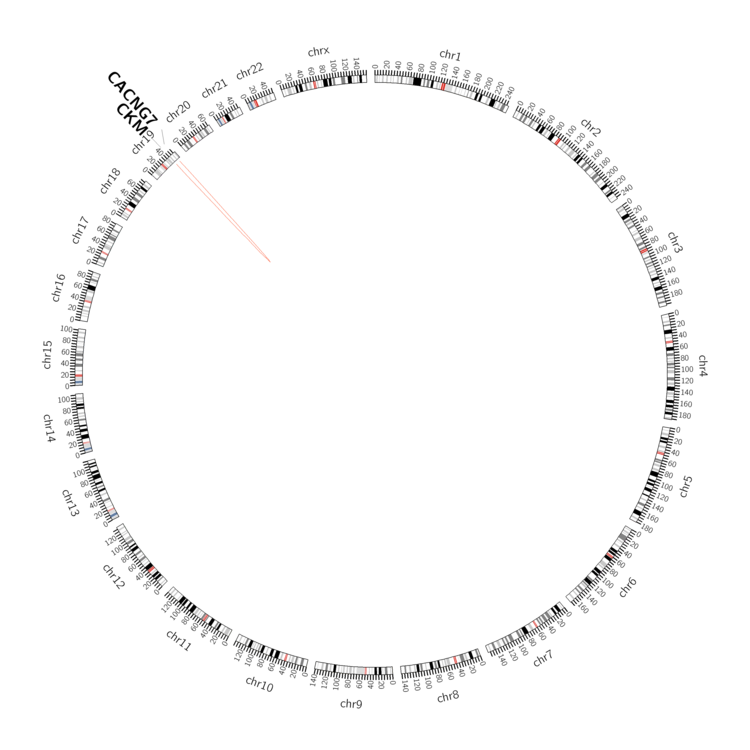 |
| - For Inter-chromosomal Variations |
| There's no inter-chromosomal structural variation. |
| - For Intra-chromosomal Variations |
| * Intra-chromosomal variantions includes 'intrachromosomal amplicon to amplicon', 'intrachromosomal amplicon to non-amplified dna', 'intrachromosomal deletion', 'intrachromosomal fold-back inversion', 'intrachromosomal inversion', 'intrachromosomal tandem duplication', 'Intrachromosomal unknown type', 'intrachromosomal with inverted orientation', 'intrachromosomal with non-inverted orientation'. |
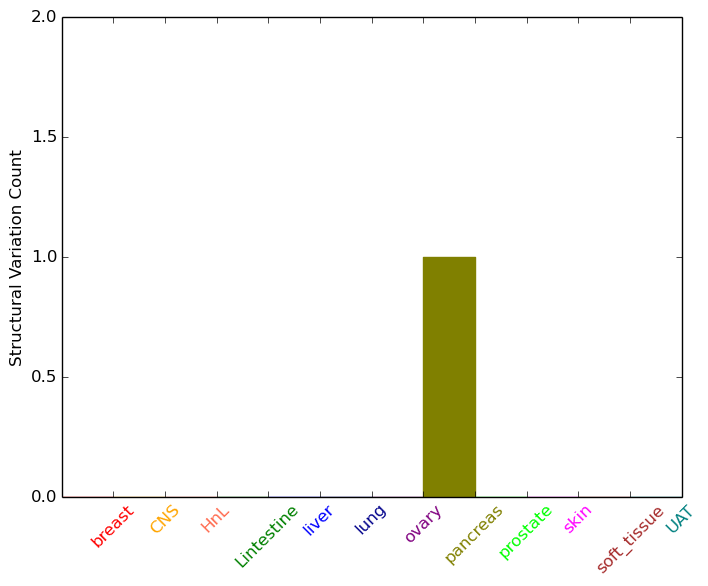 |
| Sample | Symbol_a | Chr_a | Start_a | End_a | Symbol_b | Chr_b | Start_b | End_b |
| pancreas | CKM | chr19 | 45814910 | 45814930 | CACNG7 | chr19 | 54446329 | 54446349 |
| cf) Tissue number; Tissue name (1;Breast, 2;Central_nervous_system, 3;Haematopoietic_and_lymphoid_tissue, 4;Large_intestine, 5;Liver, 6;Lung, 7;Ovary, 8;Pancreas, 9;Prostate, 10;Skin, 11;Soft_tissue, 12;Upper_aerodigestive_tract) |
| * From mRNA Sanger sequences, Chitars2.0 arranged chimeric transcripts. This table shows CKM related fusion information. |
| ID | Head Gene | Tail Gene | Accession | Gene_a | qStart_a | qEnd_a | Chromosome_a | tStart_a | tEnd_a | Gene_a | qStart_a | qEnd_a | Chromosome_a | tStart_a | tEnd_a |
| BF693845 | CKM | 2 | 56 | 19 | 45826079 | 45826133 | MYOZ2 | 53 | 733 | 4 | 120079264 | 120090171 | |
| F01290 | CKM | 2 | 75 | 19 | 45818836 | 45821136 | CKM | 72 | 306 | 19 | 45815041 | 45818819 | |
| BG994088 | CKM | 8 | 281 | 19 | 45815024 | 45818839 | PLD2 | 274 | 370 | 17 | 4714517 | 4714613 | |
| DV080414 | MUC2 | 1 | 414 | 11 | 1075879 | 1078510 | CKM | 415 | 623 | 19 | 45818743 | 45821178 | |
| Top |
| Mutation type/ Tissue ID | brca | cns | cerv | endome | haematopo | kidn | Lintest | liver | lung | ns | ovary | pancre | prost | skin | stoma | thyro | urina | |||
| Total # sample | 1 | |||||||||||||||||||
| GAIN (# sample) | 1 | |||||||||||||||||||
| LOSS (# sample) |
| cf) Tissue ID; Tissue type (1; Breast, 2; Central_nervous_system, 3; Cervix, 4; Endometrium, 5; Haematopoietic_and_lymphoid_tissue, 6; Kidney, 7; Large_intestine, 8; Liver, 9; Lung, 10; NS, 11; Ovary, 12; Pancreas, 13; Prostate, 14; Skin, 15; Stomach, 16; Thyroid, 17; Urinary_tract) |
| Top |
|
 |
| Top |
| Stat. for Non-Synonymous SNVs (# total SNVs=31) | (# total SNVs=11) |
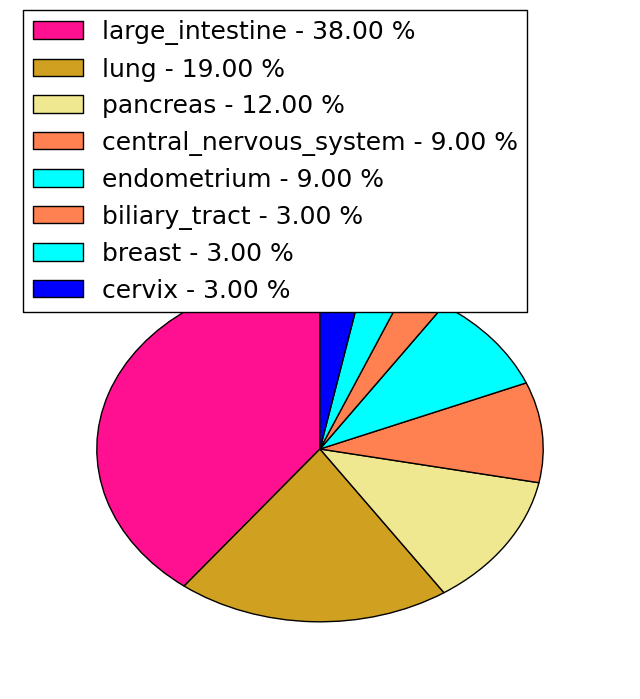 | 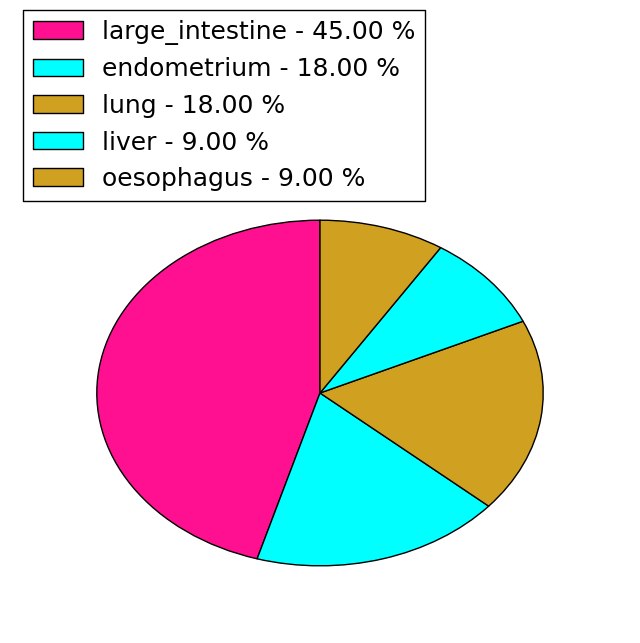 |
(# total SNVs=0) | (# total SNVs=1) |
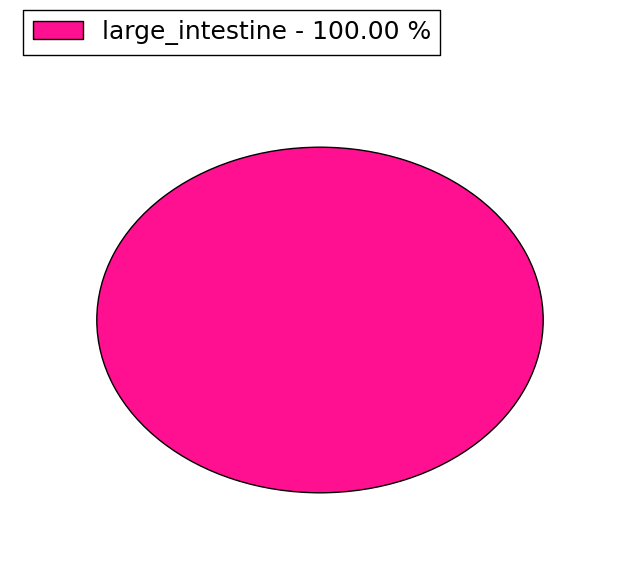 |
| Top |
| * When you move the cursor on each content, you can see more deailed mutation information on the Tooltip. Those are primary_site,primary_histology,mutation(aa),pubmedID. |
| GRCh37 position | Mutation(aa) | Unique sampleID count |
| chr19:45810883-45810883 | p.G268D | 2 |
| chr19:45818813-45818813 | p.V131I | 2 |
| chr19:45818835-45818835 | p.P123P | 2 |
| chr19:45821144-45821144 | p.R96H | 2 |
| chr19:45810756-45810756 | p.E310E | 2 |
| chr19:45815033-45815033 | p.R209R | 2 |
| chr19:45810133-45810133 | p.R341W | 2 |
| chr19:45822867-45822867 | p.T35T | 1 |
| chr19:45815077-45815077 | p.D195N | 1 |
| chr19:45810137-45810137 | p.A339A | 1 |
| Top |
|
 |
| Point Mutation/ Tissue ID | 1 | 2 | 3 | 4 | 5 | 6 | 7 | 8 | 9 | 10 | 11 | 12 | 13 | 14 | 15 | 16 | 17 | 18 | 19 | 20 |
| # sample | 1 | 8 | 1 | 2 | 2 | 1 | 1 | 5 | 2 | 1 | 5 | |||||||||
| # mutation | 1 | 8 | 1 | 2 | 2 | 1 | 1 | 5 | 2 | 1 | 5 | |||||||||
| nonsynonymous SNV | 1 | 5 | 1 | 2 | 1 | 1 | 1 | 2 | 1 | 3 | ||||||||||
| synonymous SNV | 3 | 1 | 3 | 2 | 2 |
| cf) Tissue ID; Tissue type (1; BLCA[Bladder Urothelial Carcinoma], 2; BRCA[Breast invasive carcinoma], 3; CESC[Cervical squamous cell carcinoma and endocervical adenocarcinoma], 4; COAD[Colon adenocarcinoma], 5; GBM[Glioblastoma multiforme], 6; Glioma Low Grade, 7; HNSC[Head and Neck squamous cell carcinoma], 8; KICH[Kidney Chromophobe], 9; KIRC[Kidney renal clear cell carcinoma], 10; KIRP[Kidney renal papillary cell carcinoma], 11; LAML[Acute Myeloid Leukemia], 12; LUAD[Lung adenocarcinoma], 13; LUSC[Lung squamous cell carcinoma], 14; OV[Ovarian serous cystadenocarcinoma ], 15; PAAD[Pancreatic adenocarcinoma], 16; PRAD[Prostate adenocarcinoma], 17; SKCM[Skin Cutaneous Melanoma], 18:STAD[Stomach adenocarcinoma], 19:THCA[Thyroid carcinoma], 20:UCEC[Uterine Corpus Endometrial Carcinoma]) |
| Top |
| * We represented just top 10 SNVs. When you move the cursor on each content, you can see more deailed mutation information on the Tooltip. Those are primary_site, primary_histology, mutation(aa), pubmedID. |
| Genomic Position | Mutation(aa) | Unique sampleID count |
| chr19:45810883 | p.E346K | 2 |
| chr19:45810118 | p.G268D | 2 |
| chr19:45815134 | p.I263I | 1 |
| chr19:45822867 | p.T35T | 1 |
| chr19:45810765 | p.R236Q | 1 |
| chr19:45815158 | p.A31V | 1 |
| chr19:45822880 | p.E231K | 1 |
| chr19:45810845 | p.S199S | 1 |
| chr19:45818754 | p.T180M | 1 |
| chr19:45810857 | p.E368Q | 1 |
| * Copy number data were extracted from TCGA using R package TCGA-Assembler. The URLs of all public data files on TCGA DCC data server were gathered on Jan-05-2015. Function ProcessCNAData in TCGA-Assembler package was used to obtain gene-level copy number value which is calculated as the average copy number of the genomic region of a gene. |
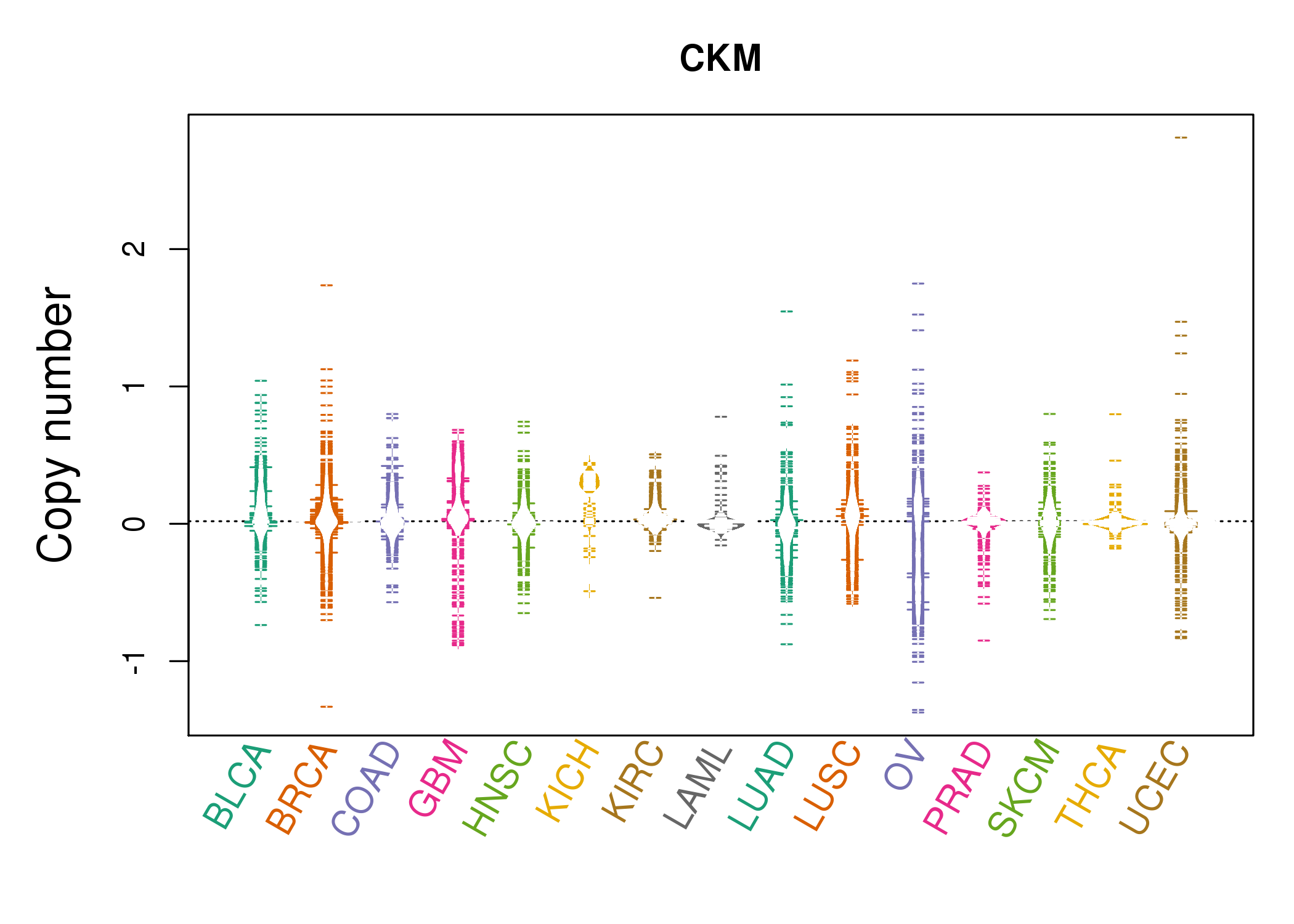 |
| cf) Tissue ID[Tissue type]: BLCA[Bladder Urothelial Carcinoma], BRCA[Breast invasive carcinoma], CESC[Cervical squamous cell carcinoma and endocervical adenocarcinoma], COAD[Colon adenocarcinoma], GBM[Glioblastoma multiforme], Glioma Low Grade, HNSC[Head and Neck squamous cell carcinoma], KICH[Kidney Chromophobe], KIRC[Kidney renal clear cell carcinoma], KIRP[Kidney renal papillary cell carcinoma], LAML[Acute Myeloid Leukemia], LUAD[Lung adenocarcinoma], LUSC[Lung squamous cell carcinoma], OV[Ovarian serous cystadenocarcinoma ], PAAD[Pancreatic adenocarcinoma], PRAD[Prostate adenocarcinoma], SKCM[Skin Cutaneous Melanoma], STAD[Stomach adenocarcinoma], THCA[Thyroid carcinoma], UCEC[Uterine Corpus Endometrial Carcinoma] |
| Top |
| Gene Expression for CKM |
| * CCLE gene expression data were extracted from CCLE_Expression_Entrez_2012-10-18.res: Gene-centric RMA-normalized mRNA expression data. |
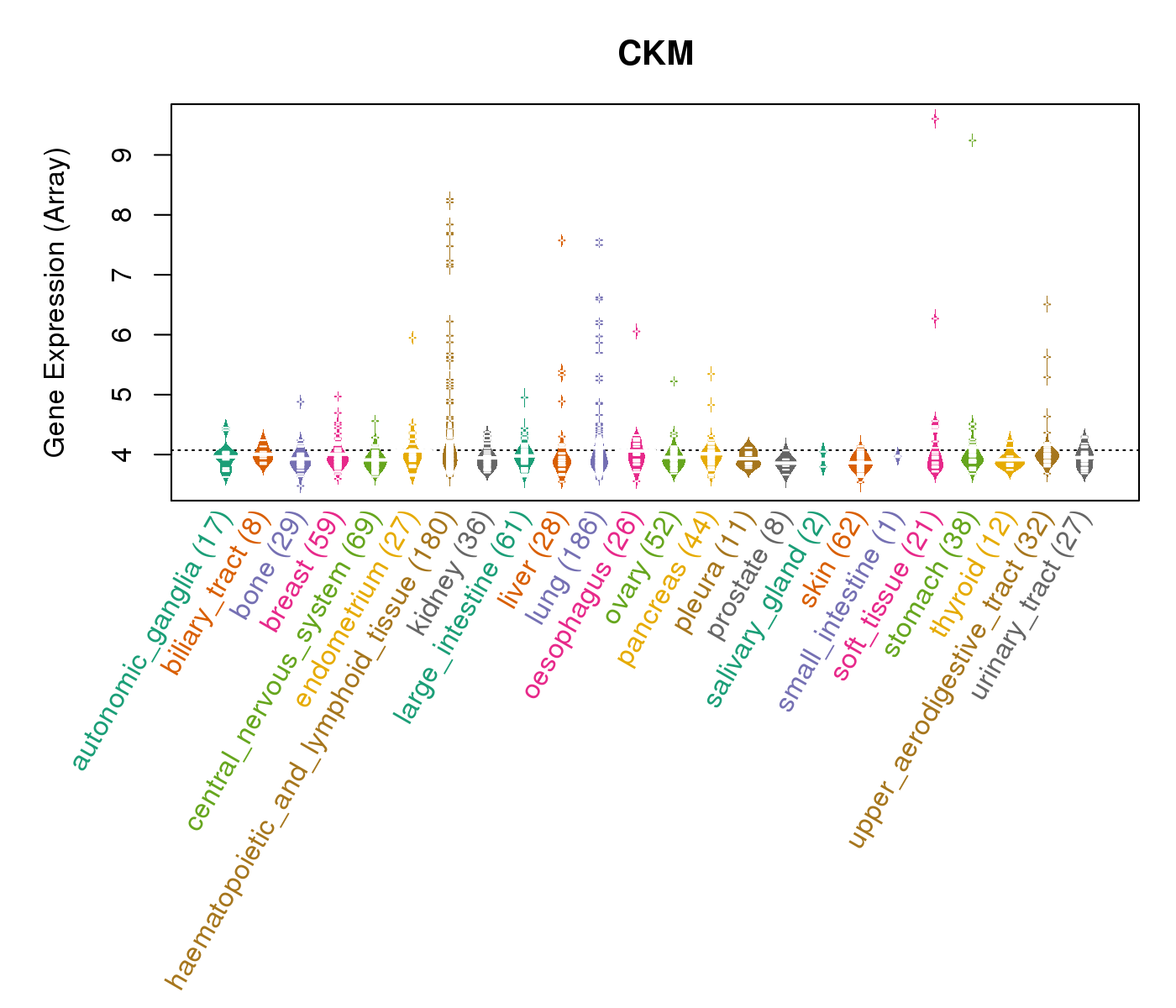 |
| * Normalized gene expression data of RNASeqV2 was extracted from TCGA using R package TCGA-Assembler. The URLs of all public data files on TCGA DCC data server were gathered at Jan-05-2015. Only eight cancer types have enough normal control samples for differential expression analysis. (t test, adjusted p<0.05 (using Benjamini-Hochberg FDR)) |
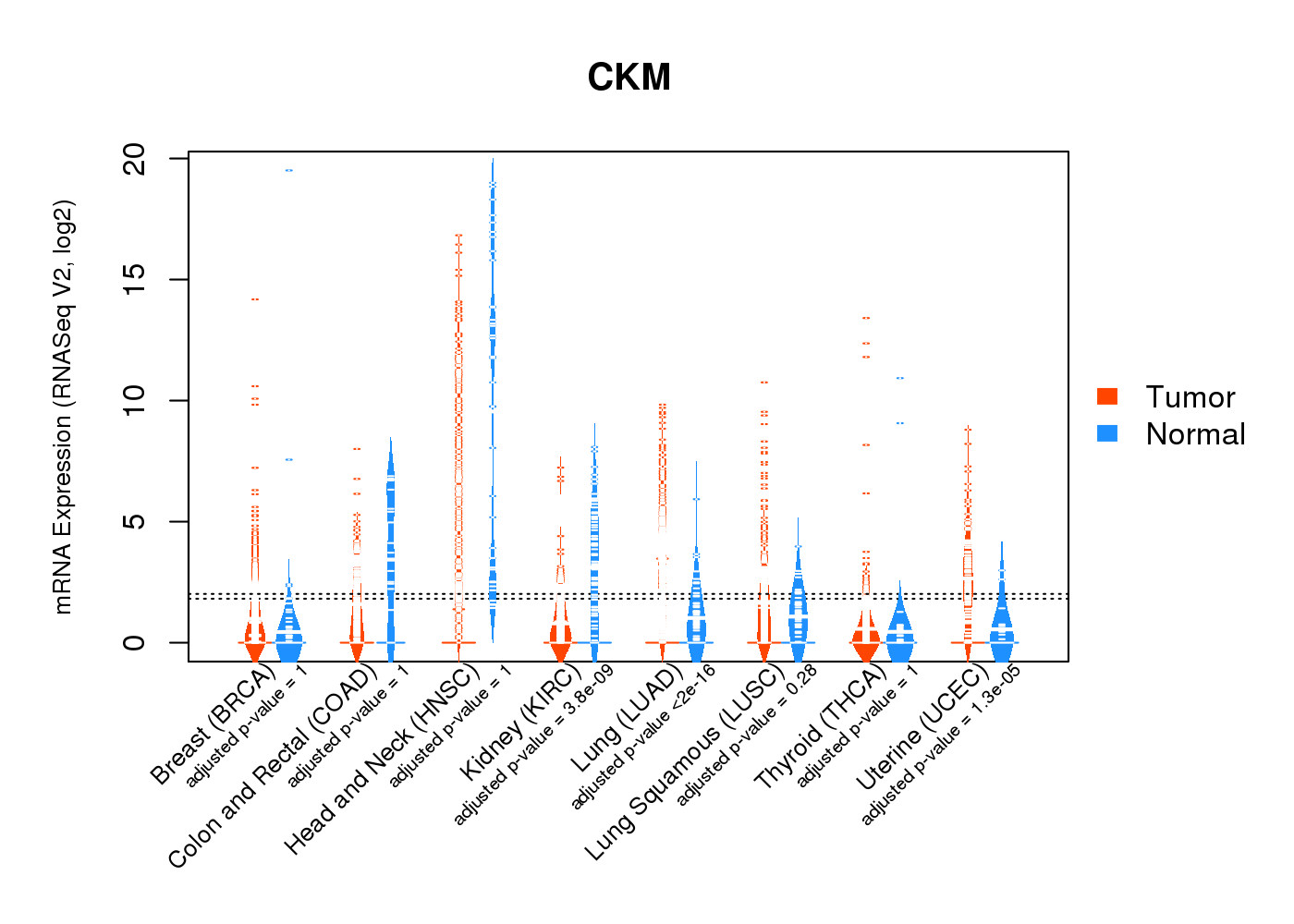 |
| Top |
| * This plots show the correlation between CNV and gene expression. |
: Open all plots for all cancer types
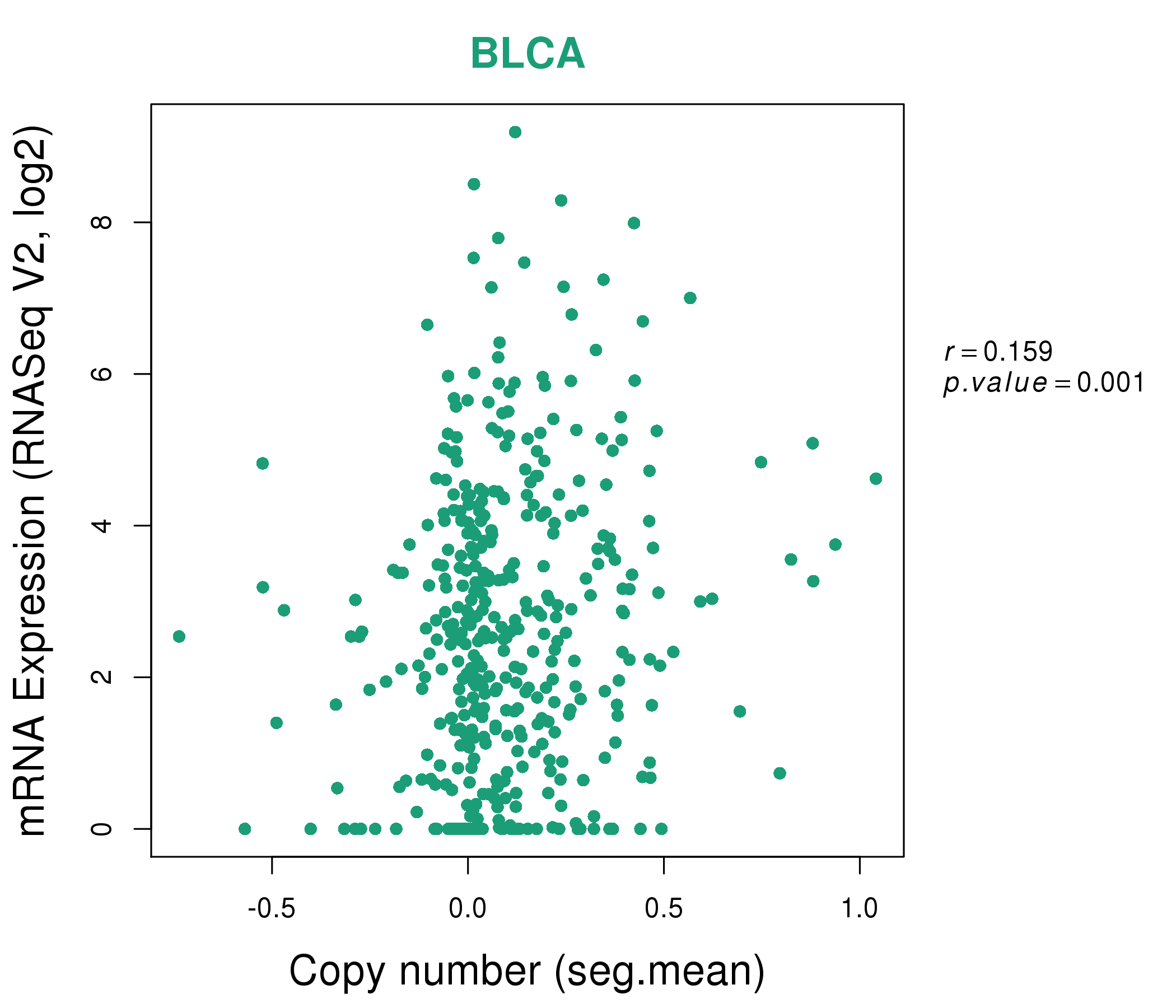 |
|
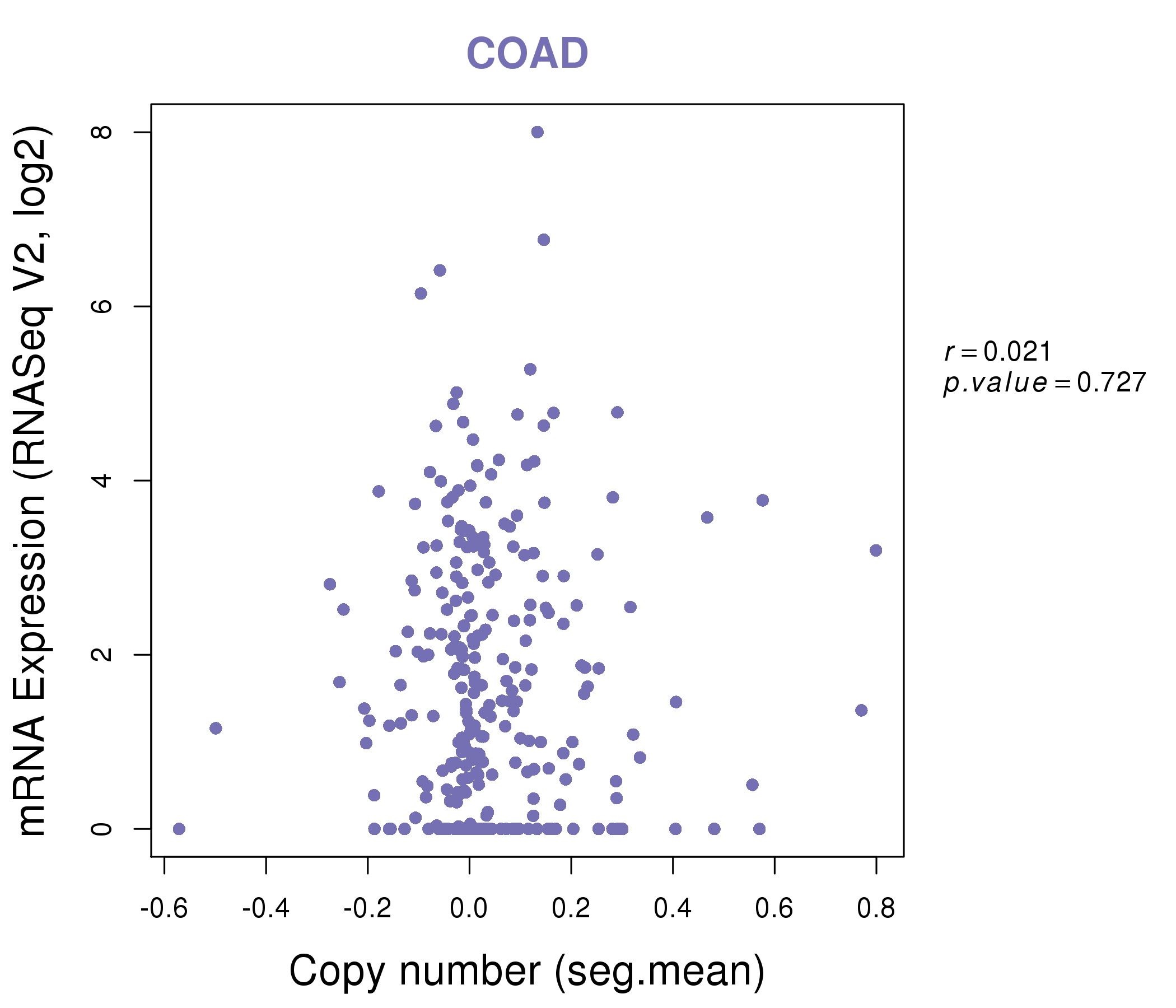 |
|
| Top |
| Gene-Gene Network Information |
| * Co-Expression network figures were drawn using R package igraph. Only the top 20 genes with the highest correlations were shown. Red circle: input gene, orange circle: cell metabolism gene, sky circle: other gene |
: Open all plots for all cancer types
 |
| ||||
| ANKRD26P1,ATP2B3,C2orf83,CELP,CKMT2,CSTB,DMD, FAM25BP,GALNT12,H2AFB1,H2BFM,H2BFWT,HTR5A,LCN15, PLA2G4E,RHOXF1,RHOXF2B,SEPT14,SLC10A1,SSX4,SSX6 | ABRA,ARPP21,MLIP,C8orf22,CA3,CAV3,CKMT2, CORO6,FBXO40,HRC,LDB3,MYH1,MYOM1,NT5C1A, PGAM2,PYGM,SLC25A4,SLC36A2,SRL,SYPL2,TNNT3 | ||||
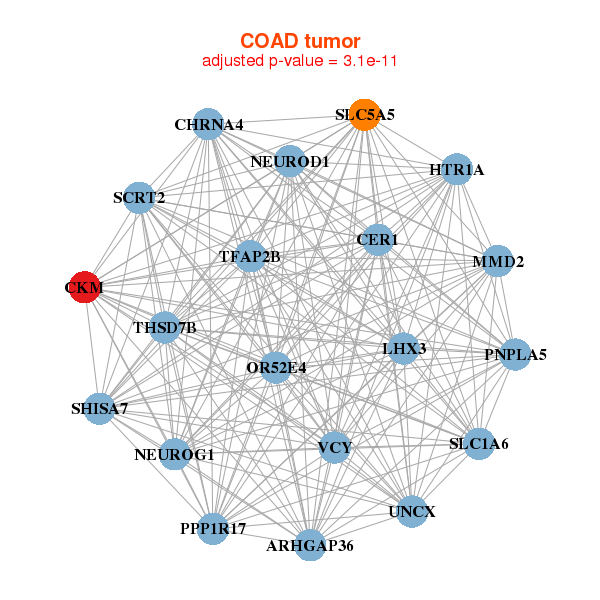 |
| ||||
| ACSF2,C8orf33,CKMT2,ERP27,EYA1,FITM2,GGH, SLC52A2,HSF1,IFITM1,LY6G6D,MRPS28,POU5F1B,PPP1R16A, PTP4A3,SLC30A2,SP6,SRPX2,SYN3,TNNC2,TOP1MT | ASPN,BOK,C14orf132,CAMK2A,CASQ1,CCDC136,CKMT2, DACT3,DGKG,DMPK,DNAJB5,FREM1,HAND1,KCTD8, MYOM1,NTM,PTRF,ARHGEF26,SLC8A1,SMYD1,SNTA1 |
| * Co-Expression network figures were drawn using R package igraph. Only the top 20 genes with the highest correlations were shown. Red circle: input gene, orange circle: cell metabolism gene, sky circle: other gene |
: Open all plots for all cancer types
| Top |
: Open all interacting genes' information including KEGG pathway for all interacting genes from DAVID
| Top |
| Pharmacological Information for CKM |
| DB Category | DB Name | DB's ID and Url link |
| * Gene Centered Interaction Network. |
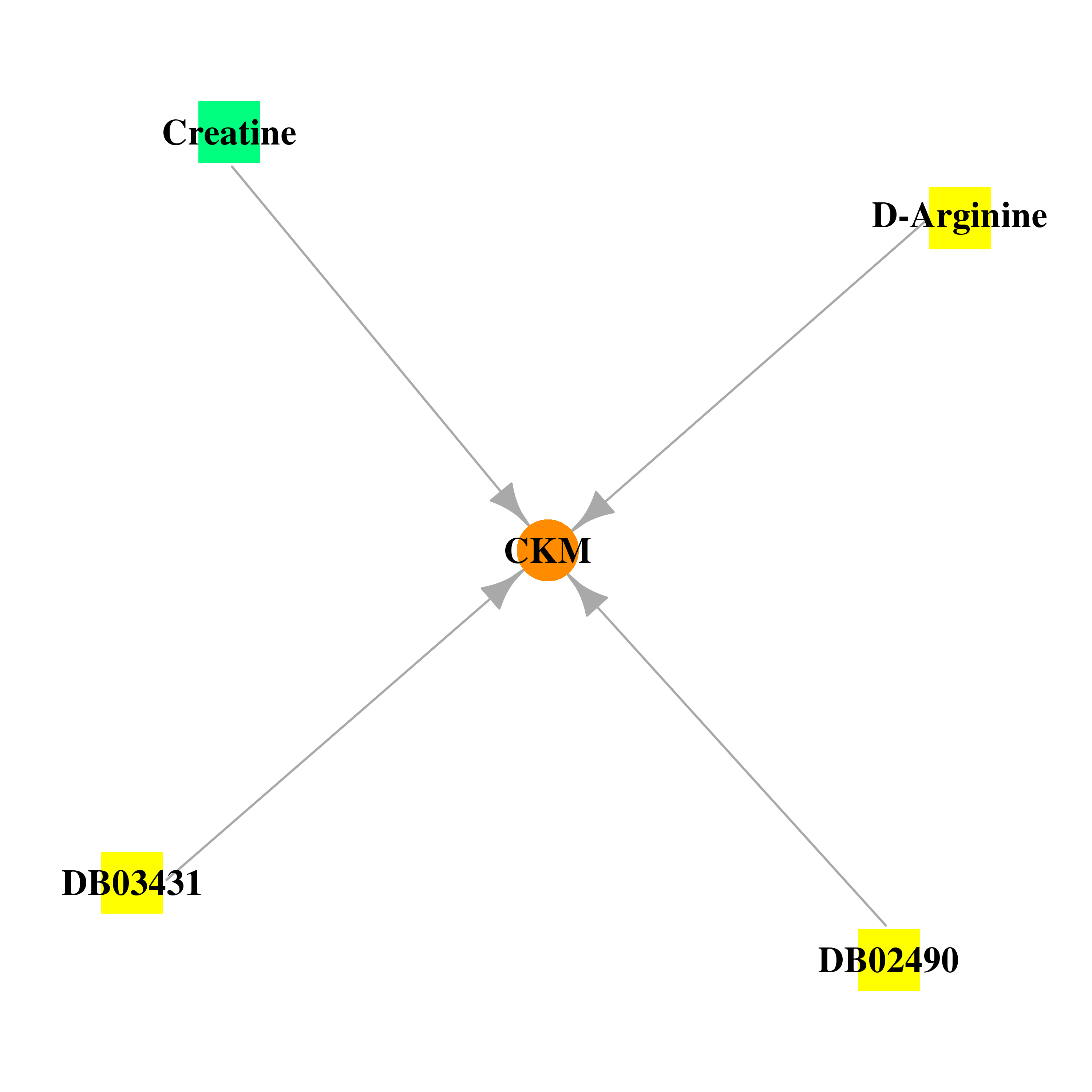 |
| * Drug Centered Interaction Network. |
| DrugBank ID | Target Name | Drug Groups | Generic Name | Drug Centered Network | Drug Structure |
| DB00148 | creatine kinase, muscle | approved; nutraceutical | Creatine | 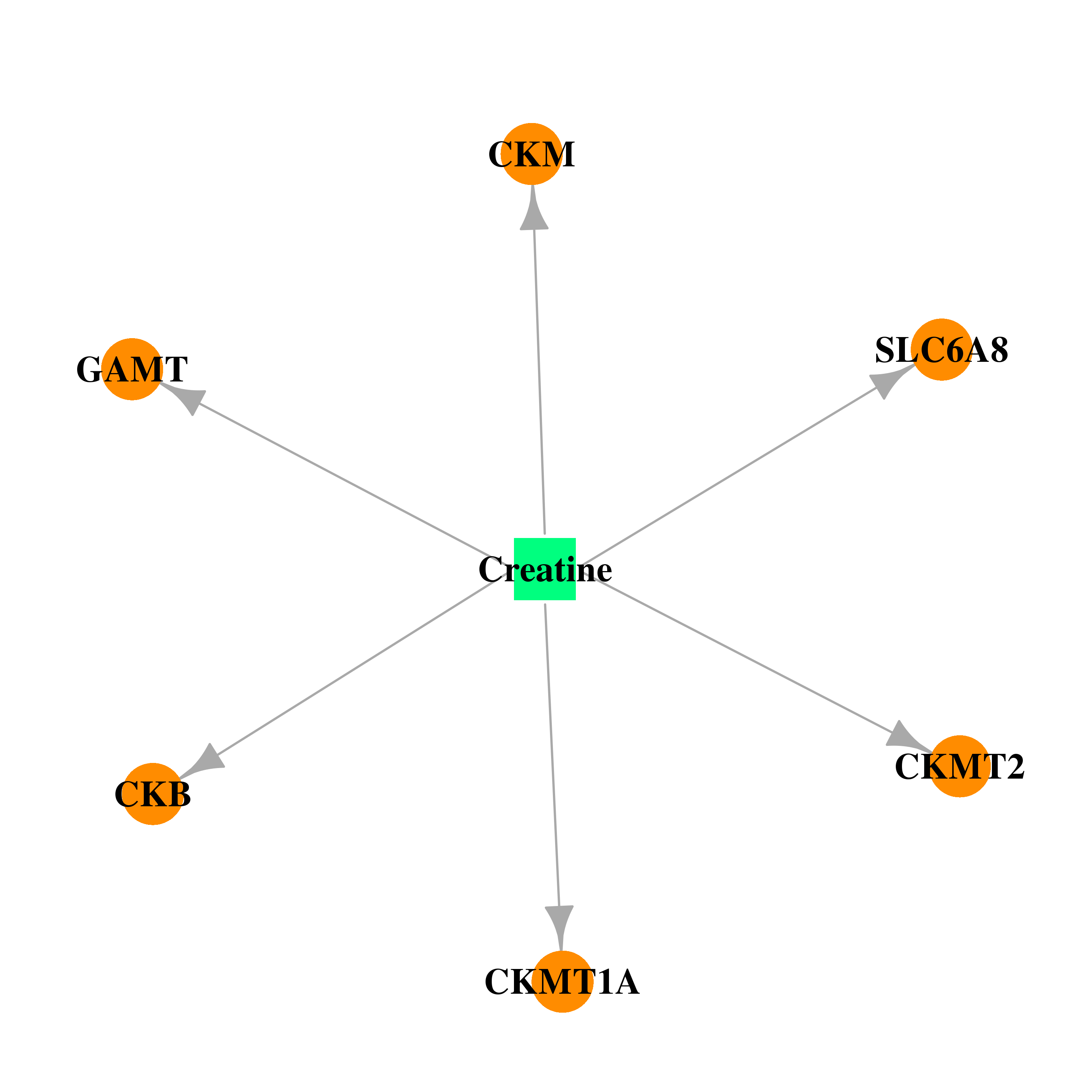 | 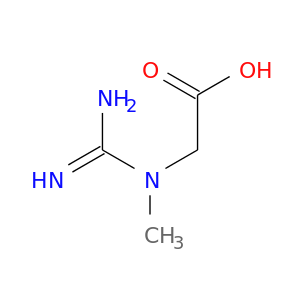 |
| DB02490 | creatine kinase, muscle | experimental | (Diaminomethyl-Methyl-Amino)-Acetic Acid | 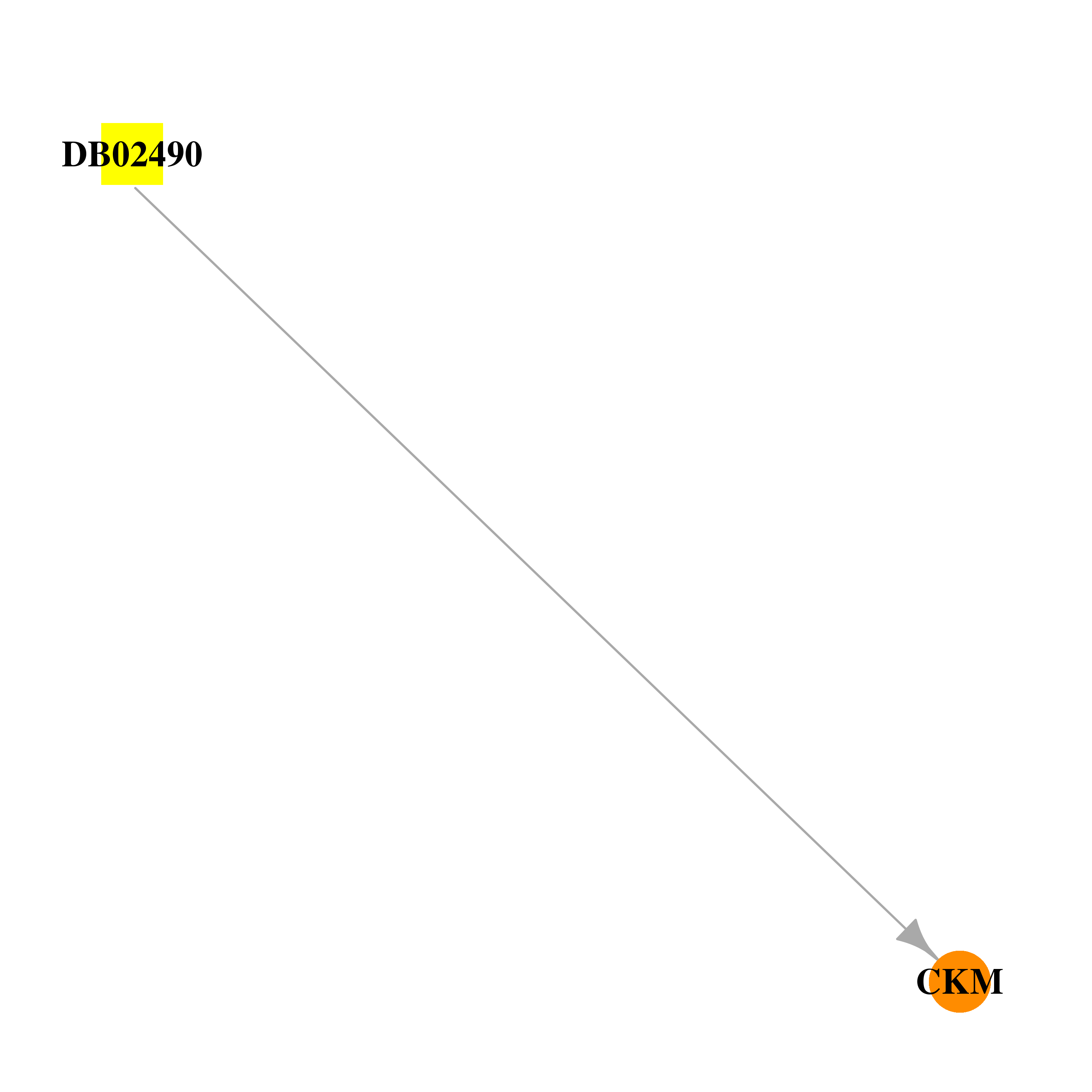 |  |
| DB03431 | creatine kinase, muscle | experimental | Adenosine-5'-Diphosphate | 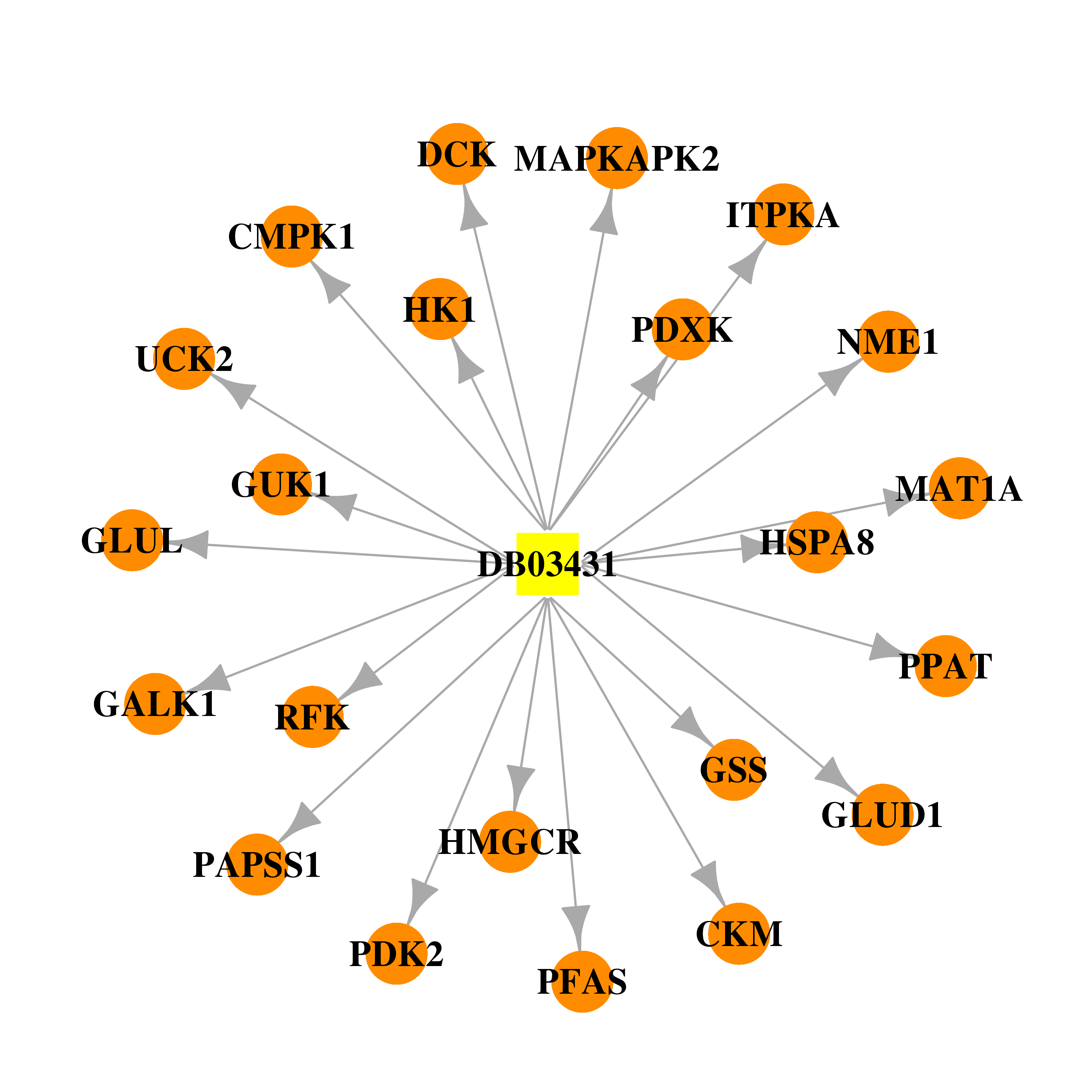 | 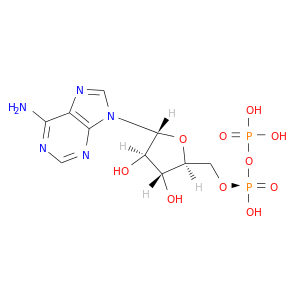 |
| DB04027 | creatine kinase, muscle | experimental | D-Arginine | 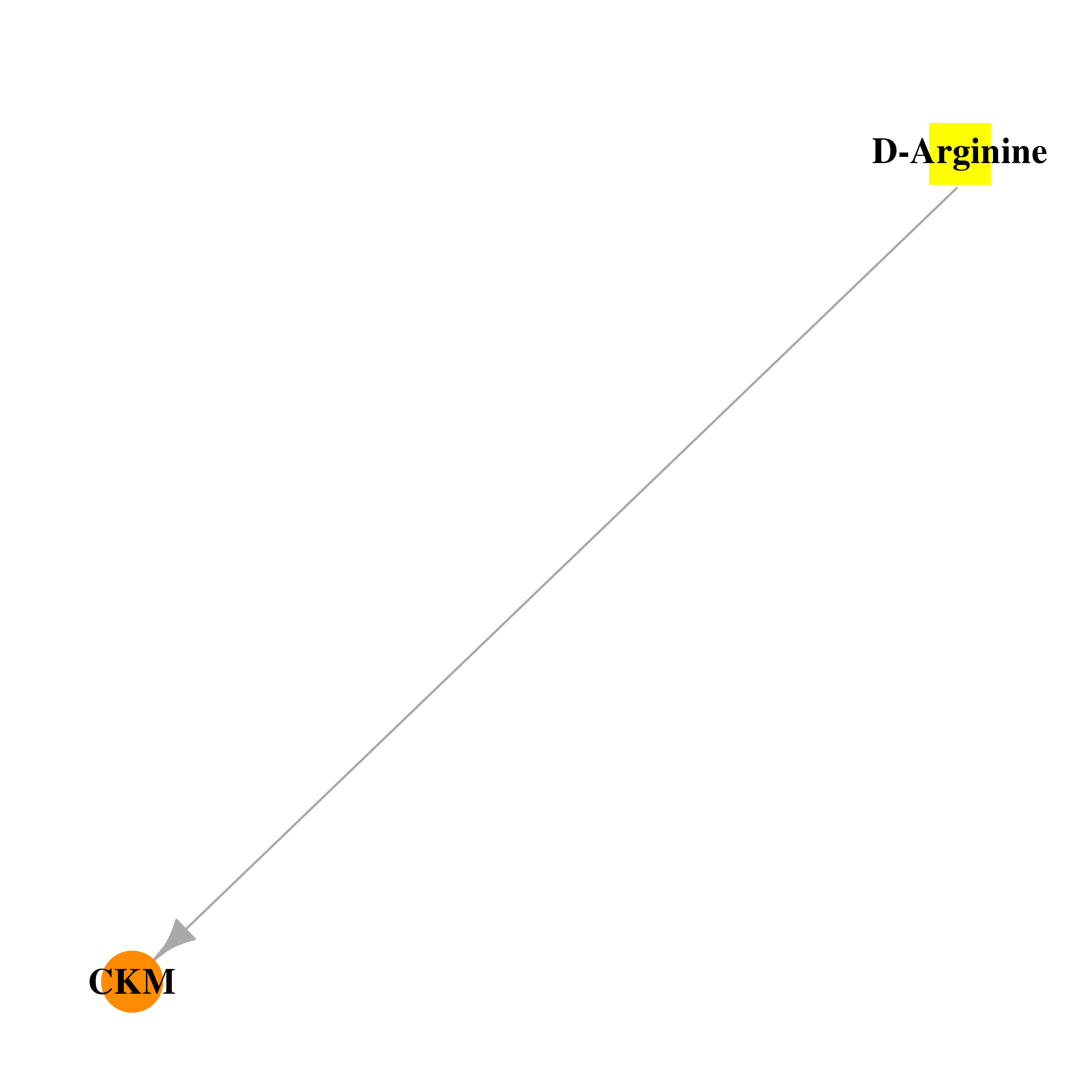 | 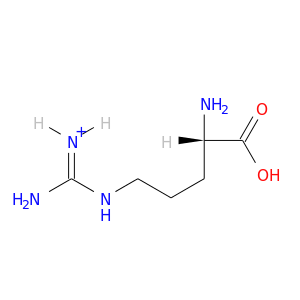 |
| Top |
| Cross referenced IDs for CKM |
| * We obtained these cross-references from Uniprot database. It covers 150 different DBs, 18 categories. http://www.uniprot.org/help/cross_references_section |
: Open all cross reference information
|
Copyright © 2016-Present - The Univsersity of Texas Health Science Center at Houston @ |






